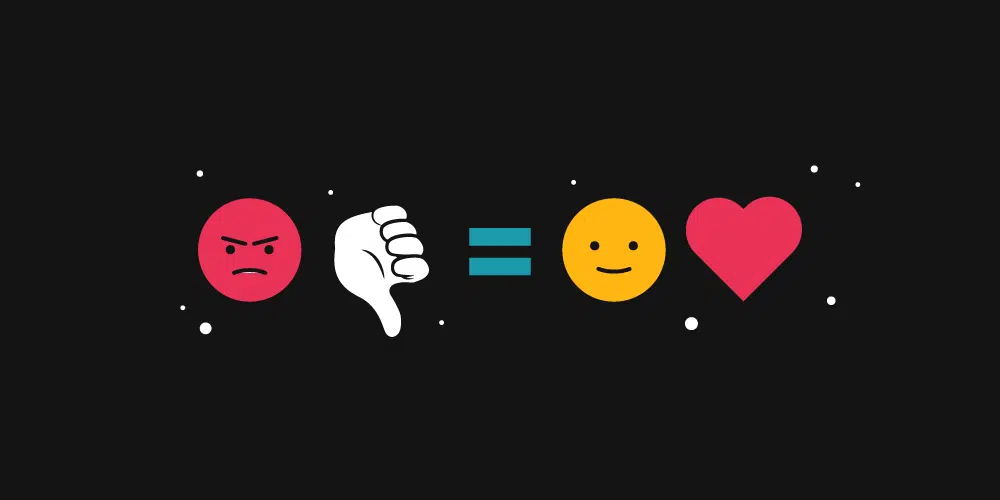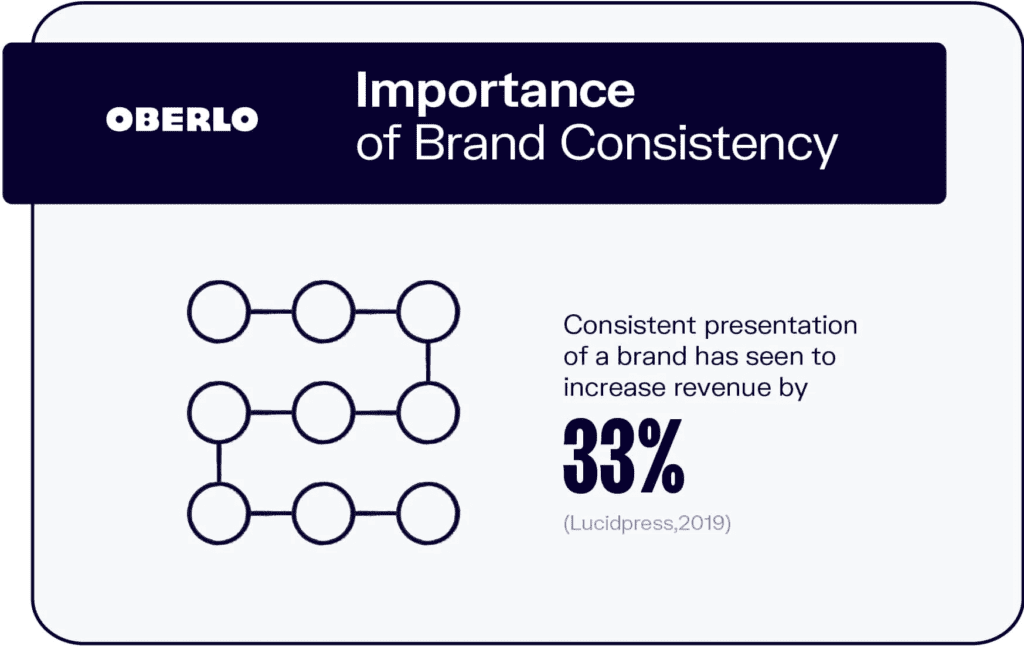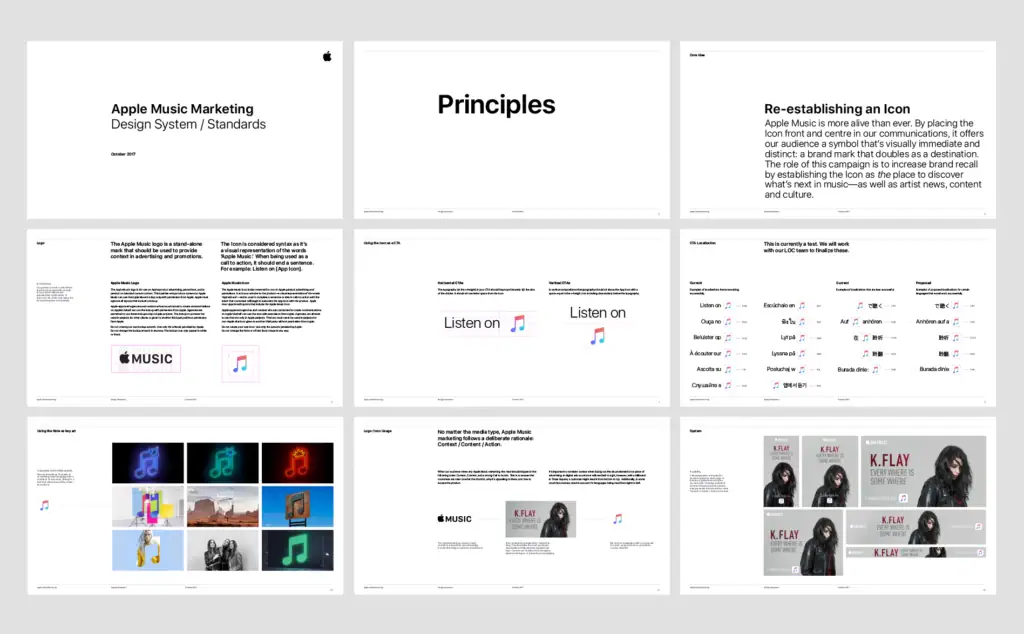Consistency in Branding: Why It Matters and How to Achieve It
Building a strong, recognisable brand is critical for any business looking to stand out in a crowded marketplace. But crafting a solid brand goes far beyond just designing an eye-catching logo. While visual identity is essential, consistency is equally vital when establishing your company's reputation.
What exactly does “consistency” mean when it comes to branding? At its core, it refers to maintaining alignment across every consumer touchpoint – from your messaging and personality to the look and feel of marketing materials and beyond. By staying consistent in all brand communications and interactions, companies can better connect with target audiences while reinforcing what makes their offering unique.
So why does consistency matter so much for branding success? Let's explore some key reasons.
Table of Contents
Building Trust and Recognition
Humans crave patterns and familiarity. When a brand presents a reliable, consistent experience at every turn, it builds trust and recognition. Consumers come to know what to expect from that company – they can recognise the logo, tagline, colours, tone of voice and more. This familiarity breeds comfort and confidence in the brand's promise.
McDonald's golden arches provide an iconic example. No matter what country you're in, you can spot those famous yellow arches from a mile away. The red and yellow colour scheme, advertisements, packaging, menu items, and store design align to create an unmistakable brand identity tied to consistency across six decades.
Reinforcing Your Brand Identity

The brand identity encompasses all the elements that combine to convey “who” your brand is – think personality, promise, tone of voice, values and more. By staying consistent with branding, companies reinforce their unique identity in customers' minds.
When Zappos delivers exceptional service and iterates, “We're about the very best customer service,” they reinforce brand identity. If they faltered on customer support, it would undermine trust in their promise.
Consistency strengthens the associations people make with your brand in memory. And those associations drive perceptions and decisions.
Driving Familiarity Through Repetition
Familiarity is vital to winning consumer preference and loyalty. How does a brand make itself familiar? Consistent repetition across touchpoints. Again, human brains are wired to latch onto repetition and patterns. We unconsciously take note when we notice the same logo, slogan, imagery or colours surfacing frequently.
Coca-Cola's classic red and white colour scheme provides an eternal example. Repetition has locked the colours into our cultural memory as symbolic of Coca-Cola. Studies even indicate the red colour triggers thirst sensitivity and drives preference compared to competitors. Powerful impact from small consistency choices!
Boosting Ease of Recognition
Have you ever squinted at an app icon on your phone, struggling to decipher which one it was? Or spotted the curved golden arches from a highway exit and immediately felt at ease that food was nearby? Such examples demonstrate how consistency boosts ease of recognition.
Consistent visual identity cues like colour schemes, logos, iconography and more allow brands to develop instant recognition in customers' minds. This promotes comfort and familiarity while enabling quick decisions. For example, spotting the Target bullseye or Walmart star bursts provides an immediate signal amidst cluttered signage.
Attracting Attention in Cluttered Marketplaces
Modern consumers face endless choices and clutter competing for their attention across channels. A consistent brand identity cuts through the noise to stand out.
When a company maintains the same recognisable logo, messaging, imaging and personality across touchpoints, consumers can spot their brand more readily in crowded marketplaces. Distinct colours, icons, slogans and more assist brands in developing “instant recognition capital”. For example, consumers quickly identify Lululemon's purple hue or Nike's iconic swoosh across contexts.
Consistency allows brands to stake out mental real estate with swift perception activated through repetition – critical for busy consumers scanning environments.
Promotes Instant Association with Brand Values

Powerful brands aim to associate with positive values, emotions and identities in customers' minds. Consistency continuously reinforces these conceptual connections.
For Patagonia, consistent messaging and imagery focuses on environmental protection, sustainable practices and responsible consumption. Patagonia fosters values-based associations that resonate with target customers by pairing visuals of pristine landscapes with their branding and products.
Staying On-Brand Increases Perceived Authenticity
Maintaining authenticity has become pivotal in an increasingly cynical world rife with scepticism toward branding and corporations. When consumers detect “brand consistency”, they perceive increased authenticity in those identities.
Why does consistency indicate authenticity for brands? Because dedication to aligned messaging requires significant investments and commitment over the years. When companies demonstrate consistent dedication to their stated values and personalities beyond chasing short-term profits, target customers recognise that commitment as authentic.
Inconsistency, by contrast, can signal untrustworthy motives and money-driven agendas to fickle audiences.
Keeps Communication Clear and Confident
Consistent messaging builds confidence in brand communication by establishing clarity for audiences. Confusion and doubt arise when branding fluctuates haphazardly.
Southwest Airlines demonstrates clarity with consistent communication spotlighting “low-cost fares” and a “fun-loving attitude” year after year. Consumers grasp what Southwest stands for quickly without mixed signals. Confidence emerges in audiences when expectations align reliably with reality.
Aligns Consumer Experiences with Projected Image

Consistency in Branding is crucial when marketing centres' imagery conveys “aspirational” associations beyond reality. When promised experiences align consistently across touchpoints, consumers enjoy delight rather than resentment from deception.
Victoria's Secret stumbled here recently. Marketing maintained slender models while in-store purchasing experiences uncovered disappointment for many body types. Misalignment sparked controversy despite recalibrating ad imagery to diverse models. Consistency from ad visuals to actual inventory could have prevented backlash.
Reaffirms the Purchase Decision
After initially investing in a branded product or service, consistency can reaffirm intelligent purchase decisions. Consumers seek reassurance they selected the “right” option. Ongoing positive brand experiences provide that reassurance.
If Apple's iPhone stopped exuding quality, simplicity and elite branding post-purchase, buyers might second-guess investing premium prices. But seamless experiences – from sleek stores to intuitive software – reinforce wise purchase choices. Supporting branding inspires confidence beyond initial sales.
Consistency Creates Familiar Cravings
Powerful brands wield the ability to spark “intrinsic cravings” for associated offerings through consistent messaging. Think McDonald's repeatedly advertising crispy golden french fries and Big Macs. They spark a subconscious hunger for that exact meal.
Networks of neural connections between the brain's visual, memory and motivational areas drive such conditioning. We crave the familiar foods, smells, and experiences that are promoted consistently.
So, consistent brand exposure over time increases unconscious appetites and cravings for related products. In behavioural economics, this concept falls under “preference construction”. In other words, consistency plays an instrumental role in manufacturing desire. Predictable marketing primes appetites.
The Risks of Inconsistency

While benefits exist for consistent branding approaches, companies must also carefully weigh the risks of clinging to stagnancy without evolution. Consistency in Branding does not imply rigid enforcement of all policies and procedures indefinitely.
Let's explore the dangers that can emerge from overly formulaic thinking.
Stifles Innovation and Improvisation
Strict adherence to established guidelines blocks experimentation needed for progress. Clinging unthinkingly to past branding conventions restrains creative choice-making necessary for innovation.
To stay culturally relevant, modern brands must continually reimagine themselves. Opportunities arise through improvisation outside prescribed formulas. Occasional calculated risks, iteration or reinvention, enliven brands – but fearful policies restrict that.
For example, McDonald's overcame initial reluctance, allowing the Australian franchise Hungry Jack's in the 1970s. The rebrand eventually increased McDonald's footprint with over 369 locations across Australia and New Zealand—willingness to experiment unlocked unforeseen potential.
Creates Confusion Around Evolution
While consistency breeds familiarity, drastic shifts without explanation sow confusion. Customers accustomed to established branding can grow suspicious when drastic changes arise suddenly. Trust deteriorates when core elements like logos, packaging or slogans transform overnight without context.
To illustrate potential pitfalls, look towards Gap Inc.'s failed rebrand, dropping their iconic blue box logo in 2010. Backlash spiralled from customers confused by the attempted “modernisation”. Failure to educate audiences on motivations doomed the logo redesign to swift abandonment and $100 million wasted.
Triggers Resistance to Necessary Change
Consumer psychology indicates traditions hold sway even when no longer sensible or functional. Outdated branding elements persisted from their familiarity. Yet nostalgia-fueled resistance stalls necessary progress in adapting to modern contexts.
Consider long-running cartoons resisting replacing racist stereotypes with more respectful representation. While change sparks short-term fan frustration, sticking with offensive tropes damages perception and long-term relevance. Brand stewards must stay attuned when consistency crosses into stagnancy against current social expectations.
Blocks Appealing to Younger Generations
Loyalty to traditional brand positioning statements and visual identities risks failing to capture younger demographics. When consistency protocols reject groups, emerging generations struggle to connect to “frozen in time” branding.
What spoke to baby boomers holds little sway for mobile-centric millennials and Gen Z. Social media experiments generating memes or viral moments can capture youth interest rather than outdated slogans. Competent stewards allow flexibility in adapting logos, advertisements and experiences for younger mindsets alongside legacy audiences.
Strengthens Existing Biases and Exclusion
Consistency around targeting and positioning brands toward select demographics that can implicitly exclude non-conforming groups. Repetition normalises singular representations while subtler bias escapes notice.
For example, financial brands' consistent targeting of young urban professionals over decades systemically obscures awareness of other intersectional identities. Reinforced assumptions feed an illusion of non-existence. By expanding inconsistent creative flexibility rather than settling into homogenous grooves, everyday bias erodes to allow inclusion.
Measuring Brand Consistency

Determining optimal consistency investments demands quantifying current branding alignment plus projecting future value added through enhanced consistency practices. How can brands reliably measure consistency? Let's explore modern methodologies enabling acute tracking.
Brand Voice Consistency
Tonal consistency proves foundational for personality-driven brands like MailChimp. Quirky newsletter service MailChimp maintains a unique sense of awkward humour threaded through web copy, images, social media, and advertisements.
NLP or natural language processing tools allow programmatically scanning of massive textual data sets to gauge personality dimension alignment. Vocabulary, sentence structures and emotional tones can indicate how unified or fragmented brand messaging appears across interactions.
Visual Recognition Analytics
Computer vision continues advancing exponentially, achieving near (or exceeding) human performance for recognition-related tasks. Brands now leverage CV tech to audit visual branding consistency levels quickly.
Platforms ingest logos, colour schemes, photographs, videos, iconography and other creative assets to gauge alignments. The AI quantifies format, filter and effect application deviations, and colour variations. Over time, continuity analytics improves while reducing manual oversight needs.
Customer Sentiment Consistency
Tonal consistency also emerges across customer feedback channels. Sentiment analysis applications digest user reviews, social media mentions, survey responses and call transcriptions to reveal attitudes toward service quality, depth of selection, value proposition, etc.
Dissecting subjective commentary offers qualitative glimpses into potential inconsistencies between brand identity claims and actual reception. Closely monitoring experiential alignment allows timely improvement.
Channel Performance Benchmarks
Omnichannel data integration platforms afford comprehensive views into relative performance across branded assets. Digital channels provide extensive behavioural analytics for gauging expected funnel progression rates versus cross-channel reality.
Statistical dashboards spotlight digital advertising click-through proportions exceeding physical storefront conversion rates. Underperforming assets demand examination to pinpoint consistency gaps undermining cohesiveness – and revenue.
Financial Impact Modelling
Sophisticated predictive models simulate earnings trajectory based on investing in heightened consistency practices. Estimates derive from layering experimental variance into multi-armed bandit algorithms. Contrasting improved conversion or revenue return on investment projections helps strengthen justifications for unified branding expenses.
Advanced scenario testing technologies continue to mature to isolate better actual overlap between branding consistency, consumer perception, and actualised purchasing behaviours. But directional forecasting sufficiently supports consistent spending, primarily when bounded by clear attribution windows and impact timeframes.
Maintaining Consistent Branding:

We have established a clear rationale for pursuing elevated, consistent investments to strengthen branding and business outcomes. Now, let's switch focus towards pragmatic methods enabling durable implementation across organisations.
Executive Mandates
Establishing consistency first requires executive mandate and cross-functional buy-in at leadership levels. A unified vision for branding direction can only manifest with a C-suite agreement. Appoint dedicated owners responsible for consistency enactment throughout labs, sales units, backends, storefronts and ecosystems.
Creative Guideline Documentation
Tangibly codifying branding guidelines provides a central reference for sustaining alignment. Creative manuals detail approved visual identities, positioning language, iconography, photographic styles, and other experiential elements.
Yetfixed documentation risks inflexibility if not kept current. Assign ownership for guide curation to ensure refresh cycles as norms and expectations evolve. Wikis and cloud-based tools enable more accessible cross-team contributions to prevent guideline drift.
Asset Management Systems
Centralised creative asset management systems provide single sources of truth for approved branding materials across global organisations. Digital databases host permissible logos with variant treatments like size specifications and colour inversions. Compliant packaging layouts, marketing display assets, graphical templates, photographs and videos remain accessible for employees searching for on-brand creative resources.
Integrations with cloud content platforms like Dropbox or Google Drive simplify contributions and governance. Automated pipelines standardise adjustments to imported assets like image cropping or colour correction to meet guidelines.
Marketing Content Hubs
Expanding beyond creative repositories, comprehensive content systems manage messaging frameworks like taglines, campaign themes, value proposition language, press release editorial calendars and related assets.
These hubs allow teams to craft customer-facing communications adhering to established positioning standards and thought leadership. Tight platform integration surfaces approved messaging elements directly within standard tools like email marketing platforms.
Ongoing Brand Training
Training and onboarding initiatives reinforce branding strategy for employees and partners. Digital learning experiences educate around guide components from colour codes to typography choices to illustration styles.
Quizzes confirm comprehension, while simulated collaborations prompt selections between on-brand or deviant assets. Reskilling current personnel ensures consistency consciousness persists amid workforce turnover.
Auditing and Checklists:
Even stringent standards slip without vigilant reinforcement. To spot erosion, brands conduct regular audits examining materials against guidelines. Yearly checks maintain visibility while change transitions keep teams honest.
Coordinate sweeps gathering samples like product packaging, storefront signage, web properties and more. Compile audit reports noting alignment rates and deviation explanations. Checklists map required branding elements by asset type for more straightforward, consistent reviews. Automatically flag uncommon usages with computer-assisted oversight.
Design and Editing Tools
Creative suites aid the creation of materials honouring brand guardrails. Packages like Canva include templated projects featuring logos, styles and graphics, allowing accessible on-brand content population. Adobe integrations connect asset management libraries to applications like Illustrator or Premiere, directly accessing up-to-date resources.
Database platforms auto-populate approved phrasing options and imagery within content editors. Inline messaging prevents choices contravening established guidelines. For authorised users, authenticated environments sandbox experimental designs contradict current standards.
Feedback Channels
Soliciting audience input spotlights potential misalignments between intended and actual brand perceptions. Interviews, focus groups and crowdsourced concept evaluations provide qualitative directional signals to ground teams in consumer reality.
Ongoing sentiment monitoring across review sites, forums and social media identifies recurring complaints highlighting areas for branding realignment. Consistently gathering external perspectives counterbalances insider biases.
Private Internal Ecosystems
Strict consistency controls prove unrealistic across public channels with user customisations or derivations. Internal ecosystems better allow carefully designed experiences reinforcing top-down consistency.
For example, Disney Park entry funnels visitors through regulated touchpoints, optimising consistent impressions. Ride queues maintain themed imagery, while theme park food service standardises packaging and offerings. Employees stay in character, aligning interactions to branded personalities and narratives. Access restrictions in these environments allow maximised influence.
Consistency Measurement Reviews
Analytics inform how branding adherence tracks against key performance indicators (KPIs) like revenue, market share, consideration levels, purchasing intent or advocacy ratings. Tie consistency surveillance to core metrics demonstrating real business impacts.
Regular reviews force issues related to non-compliant branding usage or guide unfamiliarity. Tighten control standards until leadership feels consistency verges on excess. Market testing clarifies when constraints pass beyond reason by measuring engagement, recall and other behavioural indicators.
Continual Iteration
Consistency relies on fluid systems whisking insights into guidelines and asset management while disseminating updates across channels. Staid documentation models no longer suffice in fast-paced, data-rich environments.
Modern brands instead construct consistency practices upon continual learning, lightning iteration and constant realignment, balancing creative zeal with stability. Agile frameworks outrace traditional creative development and campaign release cycles to maintain consistency.
Key Takeaways on Consistency in Branding
- Consistency builds familiarity and trust by meeting audience expectations from repeated brand exposure across every interaction.
- Aligning logos, packaging, messaging, customer service, and more reinforces the brand's unique identity.
- Consistent repetition cuts through marketplace noise to capture customer attention.
- Strict consistency risks stagnancy if brand guidelines reject testing innovative directions.
- Advanced analytics now allow data-backed insights into branding consistency levels across touchpoints.
- Look towards nimble systems sustaining consistency through fluid guide updating and cross-channel governance.
Consistency in branding represents both journey and destination. Progress requires awareness, measurement and continual realignment balanced with core attribute preservation. But brands maintaining disciplined consistency over decades remain cultural icons. And their examples provide blueprints framing durable branding for tomorrow.
